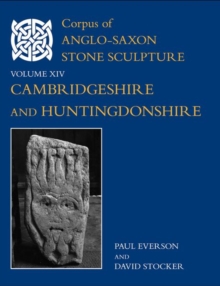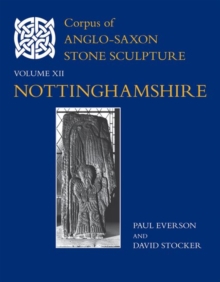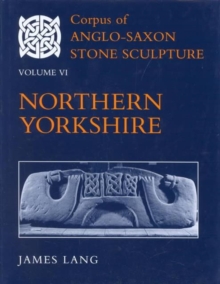
Corpus of Anglo-Saxon Stone Sculpture, Volume XIII, Derbyshire and Staffordshire Hardback
by Jane (University Lecturer, Department of History of Art, University Lecturer, Department of Hawkes, Philip C. (Retired lecturer, University of Sheffield; now an independent Archaeological Sidebottom
Part of the Corpus of Anglo-Saxon Stone Sculpture series
Hardback
Description
This volume in the Corpus of Anglo-Saxon Sculpture surveys the counties of Derbyshire and Staffordshire and provides an analytical catalogue of the Anglo-Saxon stone sculptures of that region.
Introductory chapters set the material within historical, topographical, archaeological and art-historical contexts, as well as its scholarly framework, and there are specialist contributions concerning the geology of the monuments and the sculpture from the (originally) royal ecclesiastical site at Repton in Derbyshire.
There is a full photographic record of each monument, and many of the images were taken specially for the volume. The monuments include important collections of material from Derby (St Alkmund's) and Repton, as well as individual sculptures of the highest quality such as the Lichfield Angel, cross-shafts from Bakewell and Bradbourne, the unique column standing at Wolverhampton and the sarcophagus cover from Wirksworth.
Much of the material was carved at a time when Mercian art was at its zenith in the late 8th to early 10th centuries, but there is also a significant body of carvings from the later 10th and 11th centuries when the Scandinavians are known to have been active, although the region marks the fluctuating border between Scandinavian and Anglo-Saxon controlled Mercia.
This volume thus represents a synthesis of resent research and a complete survey of the Anglo-Saxon and Anglo-Scandinavian sculpture of the two counties, and will provide a major contribution to the study of pre-Conquest sculpture in Britain.
It shows that in the early Middle Ages Derbyshire and Staffordshire offered a vibrant milieu in which influential artistic ideas could develop and spread, not just in carved stone but also in manuscripts, metalwork and other materials, and that craftsmen, working for ecclesiastical and secular patrons, produced works of the highest quality.
Information
-
Available to Order - This title is available to order, with delivery expected within 2 weeks
- Format:Hardback
- Pages:500 pages, c. 150 black and white illustrations
- Publisher:Oxford University Press
- Publication Date:26/07/2018
- Category:
- ISBN:9780197266212
Information
-
Available to Order - This title is available to order, with delivery expected within 2 weeks
- Format:Hardback
- Pages:500 pages, c. 150 black and white illustrations
- Publisher:Oxford University Press
- Publication Date:26/07/2018
- Category:
- ISBN:9780197266212










